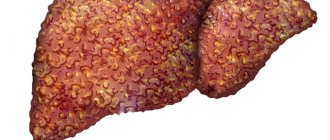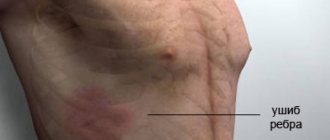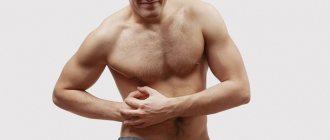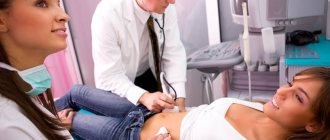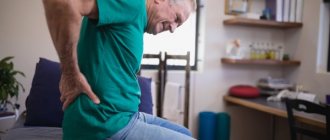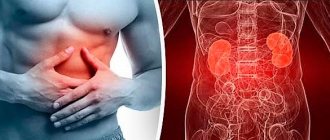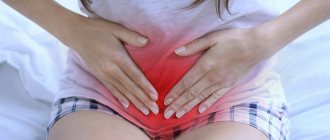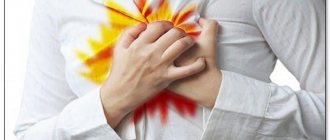At school age, more than half of children complain of recurring abdominal pain. In some cases, the pain goes away without a trace and does not require serious treatment, but in 50–70% it continues to bother patients, turning into chronic gastroenterological diseases.
There are a large number of diseases that are accompanied by abdominal pain. By nature, acute, chronic and recurrent abdominal pain is distinguished.
Acute abdominal pain can be a consequence of acute surgical pathology, trauma, acute infectious disease or food poisoning.
Much more often there are patients with complaints of recurrent abdominal pain.
Abdominal pain (abdominal pain) is the most common symptom
- for diseases of the gastrointestinal tract (stomach, pancreas, intestines, liver, gall bladder);
- for kidney diseases;
- for diseases of the pelvic organs.
In healthy people, as a rule, abdominal pain appears when overeating or excessive gas formation. Such pain does not require any special treatment; it goes away on its own within a few hours or a day.
What not to do if you have severe abdominal pain?
- You should not take painkillers - this will make it difficult to determine the true cause of abdominal pain
- Do not apply a warm heating pad to your stomach
- Don't take laxatives
- Under no circumstances should you administer enemas yourself.
- A patient with severe abdominal pain should refrain from eating and drinking
If within 2-4 hours the child’s condition becomes worse (abdominal pain intensifies), then you need to call a doctor (ambulance).
Appendicitis
Appendicitis occurs in one in six children. Rarely occurs in children under 2 years of age. Removing the appendix is one of the most common operations in children.
Appendicitis can be suspected by the following signs:
- children lose their appetite
- periodically there is nausea, weakness and fatigue,
- sometimes the body temperature rises slightly.
In some cases, there is pain around the navel, which lasts for several hours, then intensifies and is localized in the lower abdomen on the right. The pain intensifies, the child tries to lie down with his legs brought to his stomach. Appendicitis may be accompanied by constipation or slight diarrhea. There is severe pain when touched in the lower right side of the abdomen. If such signs are present, the child should be urgently taken to the hospital.
Intestinal infection
Gastroenteritis (intestinal infection) begins with nausea, vomiting, fever and paroxysmal pain. Later diarrhea appears. The pain intensifies before and after eating. Often other family members have similar symptoms of the disease.
Hypothermia and sore throat occur in young children several times a year. Viruses and bacteria cause inflammation not only of the lymph nodes of the neck, but also of the intestinal mesentery. Sometimes the abdominal pain is severe, similar to the pain of appendicitis.
Pain in the throat and abdomen can also accompany infectious mononucleosis and so-called enterovirus infections.
In 4-5% of cases, periodically occurring severe abdominal pain in children is accompanied by nausea and vomiting, but is not associated with poisoning or intestinal infection and may be a consequence of intestinal vasospasm (abdominal migraine). In case of such pain, the child should be shown to a neurologist.
Gastritis and gastroduodenitis
Pain that occurs immediately or within 20-30 minutes after eating indicates diseases of the esophagus and stomach. Night pain, “hungry”, passing after eating or occurring 1-2 hours after eating indicate a slow evacuation of gastric contents and diseases of the duodenum (including peptic ulcer). If the digestive processes are disrupted or if there are diseases of the small intestine, pain often occurs after eating fresh fruits and vegetables, mainly in the evening.
When a child has such complaints, the first rule for parents should be the child’s daily routine. Primary school children should go to bed at 21.00, senior schoolchildren - at 22.00. Younger schoolchildren must have time for naps during the day. All children should have the opportunity to go out and play after school. It is important to remember about 3 hot meals a day. If there is no hot food for breakfast at school, then you need to feed the child at home. If a child is additionally involved in clubs or sections, he should have time to have a quiet lunch. Do not allow children to eat at night; they should have dinner 1.5-2 hours before bedtime.
Parents should explain to their child why it is bad to consume fast food, chips, and carbonated drinks. If abdominal pain recurs periodically in a child for 2–3 months, this should alert parents: does the child have chronic gastritis and is it time to see a doctor?
A common cause of prolonged abdominal pain in children is constipation. Constipation disrupts the functioning of the intestines and manifests itself as pain in the form of colic.
Kidney inflammation
Kidney inflammation occurs more often in girls and begins with pain in the side or lower back. Children urinate frequently and experience fever, nausea, and vomiting. In case of such symptoms, the child should be shown to a urologist.
Abdominal muscle strain
Stretching the abdominal muscles occurs due to excessive exercise, coughing or vomiting. Pain occurs only when walking or if the child tries to sit upright. The pain is sudden and sharp (unlike gastroenteritis, when the pain is dull). The general condition is not disturbed, good appetite remains.
Psychological problems
Psychological problems occur in 10% of school-age children. In 90% of cases, it is impossible to identify any physical cause of pain. They are caused by experiences, stress or other psychological factors. Children describe in these cases a dull pain around the navel that appears and disappears. Such children are usually pale, tired, and have headaches and nausea. Although in most cases these phenomena resolve spontaneously, it is necessary to monitor the child so as not to miss any disease. Abdominal pain due to psychological reasons can sometimes be quite severe, so pay more attention to your child and try to find out the cause. Sometimes it is necessary to consult a psychotherapist and talk with teachers at school.
A simple way to examine the abdomen if pain occurs
What to do if your stomach hurts? Experts recommend the following method, accessible to any parent and suitable for a child of any age. The surface of the abdomen (from the solar plexus to the hips) is conventionally divided into 9 zones. The pain in each of them corresponds to its own internal organ. To carry out such a division, you need to imagine a quadrangle of 9 squares, with the navel located in the center. This will result in three lines of zones. Upper line: above the navel, with the epigastric region in the middle. Midline: navel in the center. Bottom line: the area above the pubis - in the center, the iliac regions on the sides.
Each of the 9 selected zones conventionally contains its own organ (or several):
- Top right is the liver.
- At the top left is the spleen, part of the pancreas.
- The center of the top line is the stomach, part of the pancreas.
- To the right of the navel is the ascending colon.
- To the left of the fart is the descending colon.
- The navel is a loop of the small intestine.
- Bottom right is the appendix.
- On the lower left is the sigmoid colon.
- The center below the zone below the navel is the bladder, and in girls there is also the uterus and appendages.
Thus, after a simple preliminary examination, you can roughly understand why your stomach hurts. Symptoms in a certain area from the above indicate problems in one of the organs. Often – several at once.
Diagnostics
A pediatrician treats abdominal pain in children. He examines the baby, prescribes tests and, if necessary, refers to other specialized specialists (gastroenterologist, surgeon).
Diagnosis of these pathological conditions consists of performing a general analysis of blood, urine, feces for the presence of parasites, biochemistry, and coprograms. An ultrasound is performed to determine the condition of the internal organs. In especially severe cases, MRI, CT and other diagnostic procedures are prescribed.
Pain in the right upper abdomen
The most dangerous liver problems that require special attention are hepatitis (of any type) and cirrhosis. The pain is caused by an increase in the volume of the liver, which stretches the membrane that envelops it. The film that makes up the liver lining contains many nerves, its stretching leads to pain. This problem is indicated by a dull, aching pain. Especially after “heavy” - fried and spicy foods. More common problems associated with this area are unpleasant sensations of heaviness, nausea, heartburn and severe belching.
In particularly severe cases, an enlarged liver can be identified by touch. How and if the belly has visually increased in size. This means that an urgent visit to a doctor is necessary. The most dangerous cases lead to the accumulation of fluid in the abdominal cavity, and the development of abdominal dropsy (ascites) begins.
Hepatitis is not as rare a problem for aunts as it might seem at first glance. It can be caused by certain medications or toxic substances (often found in dyes). Cirrhosis is liver destruction, the final period of hepatitis. The doctor must determine the causes and progression of the disease and immediately hospitalize the child in a hospital.
Prevention
The main preventive measures include hardening. In this mode, the body is resistant to infections and allergens of various origins. It is recommended to avoid hypothermia. Otherwise, the risk of viral and infectious diseases increases. In winter, your feet should be kept warm.
You should take vitamins in unlimited quantities. Vitamin deficiency leads to weakened immunity. If suspicious symptoms are detected, you should immediately undergo a full diagnosis. Children should strengthen their immune system, eat right, and exercise.
Pain in the abdominal area above the navel
The stomach and pancreas are located here. In addition to known diseases, such as ulcers or gastritis, pain can occur due to viral infections in the nose or mouth, nasopharynx. In this case, high fever, nausea and even vomiting are added. Typically, the symptoms of such infectious diseases last no longer than 3 days. They are eliminated (after a doctor’s diagnosis) with antiviral drugs.
The non-infectious version of gastritis occurs from poor nutrition or poisoning. Infectious causes an intestinal infection to penetrate the stomach. Pain in acute forms leads to nausea and vomiting, fever and a sharp decrease in appetite. If the pain is acute, doctors recommend painkillers. Infectious gastritis is treated with antibacterial drugs. They are also used as prescribed by a doctor.
Chronic gastritis manifests itself as dull, aching, regular pain. This happens especially often in summer and autumn. They can be spicy, especially after “heavy” foods: fried, spicy, soda, chips, etc. The tongue of a child suffering from chronic gastritis has a white coating.
The most serious stomach disease is an ulcer. A perforated ulcer manifests itself with sharp outbreaks of unbearable pain. It is accompanied by paleness, a drop in blood pressure, muscle weakness, and sweat appears on the skin. Urgent hospitalization is required.
Symptoms
The first signs indicate the presence of infection in the body. A sharp pain is felt in the affected areas. Over time, the discomfort intensifies, the affected area of the body swells and becomes hot. The skin has a red tint. The inflammatory process increases body temperature. In rare cases, chills are felt. The patients' condition is deteriorating sharply.
Dizziness, weakness, and malaise appear. In some cases, dermatitis and severe itching appear. In the acute form of the disease, angioedema and paroxysmal cough may be observed. The child refuses to eat food, is capricious, limps, and refuses to move. If you have symptoms, you should visit a specialist and undergo a full examination.
Pain in the right and left sides
Pain here usually occurs with digestive problems. They are accompanied by rumbling in the stomach and frequent loose stools. Another reason is intestinal obstruction. The problem also arises if the child eats hair (this happens with neuroses). Intestinal stones can often appear on insufficiently digested food particles.
Very young children often experience intussusception. This means you need to immediately seek help from a surgeon. In this case, surgical intervention may be limited to straightening the intussusception through palpation; timely consultation with a doctor may exclude surgery.
Treatment
Treatment consists primarily of using various medications:
In case of food poisoning, use activated carbon and various adsorbents (for example, Neosmectin or Polyphepan);
- At elevated temperatures - Paracetamol ;
- In the presence of dysbacteriosis, medications are prescribed that help restore the intestinal microflora - these are Linex , Enterol and other drugs;
- Antibiotics ( Furazolidone , Negram , Ercefuril ) are used when intestinal infections occur;
- Antihistamines are prescribed for allergic reactions to food.
If appendicitis is detected, surgical intervention is necessary.
For abdominal pain, a diet must be prescribed, first of all, to restore the intestinal microflora and normalize the functioning of the gastrointestinal tract.
It is necessary to exclude from the diet fatty foods, fast food, coffee, salty, spicy, sweet foods, chocolate, and carbonated water.
It is recommended to eat boiled or steamed food, various cereals, soups with low-fat broth, cottage cheese, eggs, beef, and juices.
Pain in the lower abdomen on the right and left
Many people know that if the right side in the lower abdomen hurts, it could be appendicitis. If the pain is severe. Then you need to urgently seek qualified help, appendicitis develops rapidly. If there is an increase in temperature, vomiting, loose stools and “migration of pain”: from the right hypochondrium to the right side of the abdomen, this is 90% appendicitis. Often pain also occurs in neighboring areas of the body: pain in the lower abdomen and lower back, left and right areas of the abdomen at all levels, sometimes they reach areas right up to the stomach.
If the left side of the lower abdomen hurts, this may be a symptom of inflammation of the rectum or sigmoid colon (colitis). An accompanying symptom is frequent loose stools mixed with blood. The pain is usually not very acute, but long-lasting. As prescribed by a doctor, this can be treated with antibacterial drugs.
Pain in the suprapubic region
Pain in the lower central area of the abdomen is caused by lesions of the bladder, often cystitis. This is an inflammation caused by an infection entering the bladder, usually E. coli. Usually this problem is typical for girls. The problem arises from insufficient hygiene. So, when bathing, girls need to wash their urinary tract first. This reduces the likelihood of E. coli getting into them. Pain in the suprapubic region is often accompanied by frequent urination, including during sleep. The use of painkillers is acceptable. Another reason may be diseases of the uterus and its appendages. The infection gets there in a similar way. As in the case of cystitis, pain is treated with antibacterial agents.
Often, nagging pain in the lower abdomen can occur in girls as a result of the onset of the menstrual cycle or its problematic course. Especially often - if menstruation has not yet begun. The problem may be due to occlusion of the virginal pleura, causing menstrual blood to accumulate inside the uterus. Usually, other than pain, no other symptoms are observed. If girls have pain in the suprapubic area, it doesn’t matter whether it’s before or after menstruation, they should consult a gynecologist. To relieve pain, antispasmodics may be used as prescribed by a doctor.
In case of severe pain, we can talk about inflammation of the ovaries. Additional symptoms are fever and weakness in the body, decreased activity. In advanced cases, inattention to the problem can lead to surgical intervention.
Newborns and children up to one year old
Breasts cannot yet talk about their problems themselves, so we have to guess the reason based on their behavior. They often show their torment by refusing to eat, kicking their legs and pulling their knees to their tummy, crying and screaming. Ordinary colic does not require special therapy and disappears after reaching six months of age.
However, there are other possible causes of the disease - volvulus (intestinal obstruction). The child becomes nervous, refuses to eat, gas and stool stops, feces with blood clots, high fever and vomiting may appear. Such manifestations can occur in children who are bottle-fed.
If you notice such symptoms, you should immediately call emergency help without trying to cope on your own. Delay can lead to tragic consequences.
